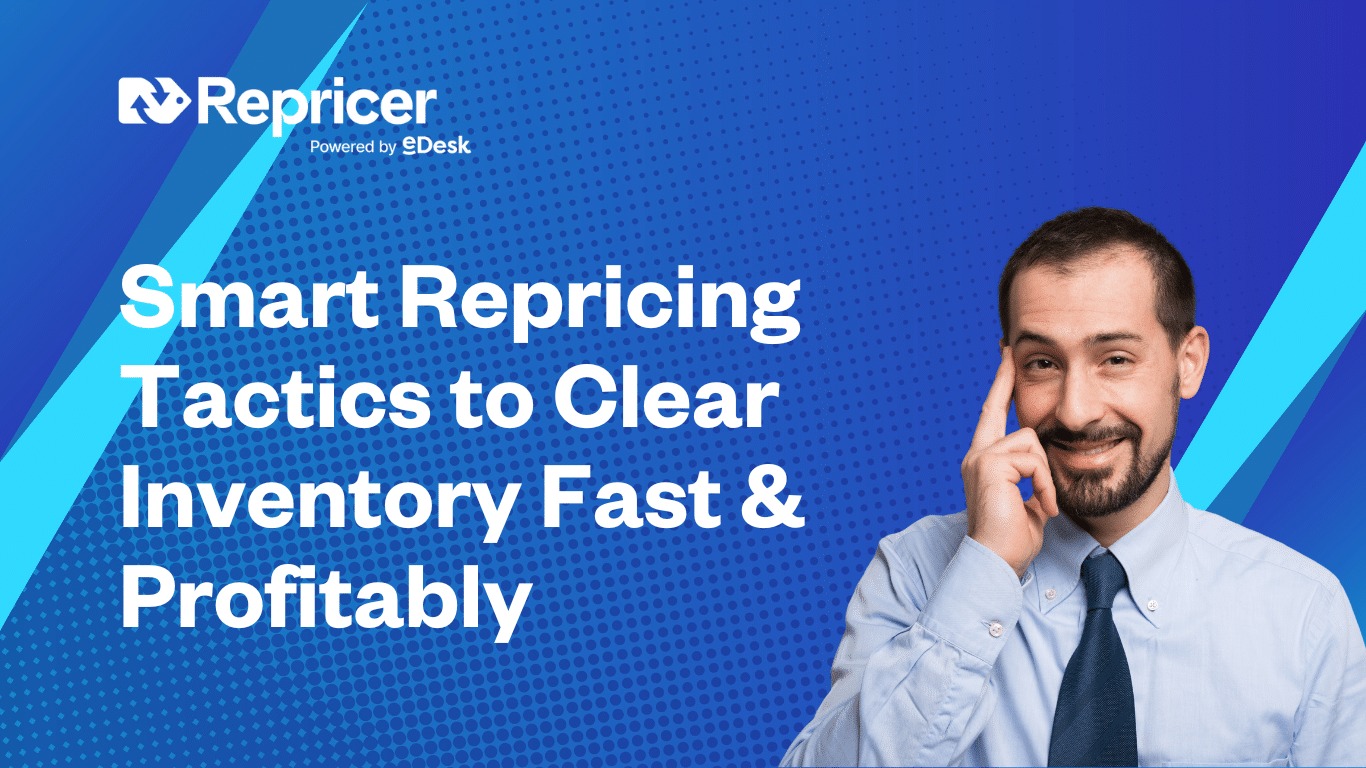We’ve all been there – a warehouse full of slow-moving stock, shelves sagging under the weight of products that seemed like a good idea at the time.
Maybe this stock was seasonal hits that missed the mark. Maybe it was made up of trendy items that fizzled out. Or maybe you made some bulk buys that you were sure would fly off the shelves. Instead, this stock is now clogging up your cash flow, racking up storage fees, and dragging down your profit margins.
Worse still, it’s making it harder to manage your bestsellers by cluttering up your listings and tying up capital you could put to better use.
But don’t worry, because these products don’t have to be dead weight. We’re bringing you the best repricing strategies to clear excess inventory profitably, so you can turn those dust collectors into fresh cash – without wrecking your margins.
Don’t Let Dust Collect on Your Cash
Holding onto excess stock can be a profit killer. You’re paying for storage, tying up capital, and risking obsolescence. On Amazon, those fees can stack up fast: long-term storage charges kicking in after 365 days and monthly fees based on the volume of your items. And that’s before you consider the opportunity cost, because every box of unsold product is space that could be used for faster-moving, higher-margin items.
Then there’s the brand perception hit. Old, unloved inventory can make your store look out of touch, pulling down your overall seller rating as potential customers are put off by outdated listings. Worse still, if you’re paying to store these items in Amazon FBA warehouses, you could end up paying more in fees than the products are even worth. In other words, you’ll see a slow, painful drain on your profits.
The solution? Smart, data-driven repricing strategies to clear excess inventory profitably, before it becomes a costly burden. We’re not talking just slashing prices here. This is all about moving stock profitably, preserving cash flow, and freeing up capital for the products that actually make you money.
How to Set Up Smart Repricing Rules
Let’s be clear: Clearing excess inventory doesn’t mean slashing your prices to oblivion. The trick is to use repricing strategies to clear excess inventory that gradually lowers your prices over time, without hitting rock bottom. This approach lets you offload slow movers without devaluing your entire range or encouraging bargain hunters to hold out for future discounts.
First, set a minimum price threshold. This is the price floor, which ensures your costs are covered, as well as a thin but respectable margin. This is crucial because without it, you risk accidentally liquidating stock at a loss, especially if you’re competing against sellers who are desperately trying to clear space.
Next, consider aggressive undercutting tactics to grab the attention of price-sensitive buyers. This means tweaking your repricing rules to slightly undercut competitors without sacrificing all your profit.
Time-based price drops are another smart move. You might want to gradually reduce prices as the stock gets older, encouraging quicker sell-through rates. You might start with a modest markdown, then step down further as you approach a critical date, like a long-term storage fee deadline, peak sales season, or an Amazon inventory cleanup event.
⚡Pro tip: Repricer’s suite of features includes powerful automation that can handle these time-based price drops and minimum profit thresholds without you having to constantly monitor prices.
Spot the Slow Movers with Data
Of course, not every product in your warehouse deserves the same aggressive clearance tactics. Some might just need a nudge, while others are beyond saving and need to be cut loose ASAP. This is where good data comes in.
Without the right insights, it’s all too easy to burn through your best margins by over-discounting products that could still sell at a reasonable profit. Worse still, you might end up holding on to true dead weight for far too long, paying storage fees on products that should have been cleared months ago.
When you’ve got tools that offer deep inventory insights, you can quickly identify which products are costing you the most to hold and which have the potential to bounce back. Look for metrics like inventory aging, sell-through rates, and days of supply to decide which items to prioritize for clearance. This way, you can focus your repricing efforts on the items that actually need a push, without tanking the prices of products that might still have some life left in them.
⚡Pro tip: With Repricer’s analytics & reporting, track exactly how long each product has been sitting on the shelf and get a clear picture of where to focus your clearance efforts.
The Race to the Bottom Has No Winners
Just because you’re clearing stock, it doesn’t mean you have to engage in a price war. In fact, aggressive price-cutting is known to backfire, dragging your entire category down with it and teaching buyers to expect deep discounts all the time. This can leave you stuck in a permanent margin squeeze, meaning you can struggle to stay profitable, even after the slow movers are gone.
Instead, aim for smart, strategic price adjustments that focus on margin protection and inventory turnover, rather than blind undercutting. Consider bundling strategies for slow movers, pairing them with popular items, or adding a small but meaningful accessory that boosts perceived value without increasing your costs by much. This way, you can maintain a premium price while still offloading excess inventory. And if you really want to protect your margins while moving old stock, consider leveraging dynamic pricing rules that adjust based on competitor behavior and demand trends.
⚡Pro tip: If you want to avoid a full-on price war, check out this guide on how to avoid price wars for a few pro tips on maintaining profitability … even as you clear stock.
Here’s to Fresh Stock, and a Fresh Start!
Don’t forget the bigger picture here. Clearing excess inventory frees up space, but that’s just a part of it. It also improves cash flow, reduces storage fees, and makes room for the products that actually make you money. A proactive approach to repricing means you can transform dead weight into profit, keeping your business nimble and your warehouse efficient.
Clearing stock is an opportunity to refresh your inventory, improve cash flow, and position your business for future growth. With the right tools and strategies, you can turn a warehouse full of slow sellers into a war chest for your next big product line.
⚡Pro tip: The right repricing strategies can help you do this efficiently, without the stress of constant manual updates.
Ready to Clear Out That Excess Stock?
A repricing tool can be the easiest way to breathe life into your warehouse again.
Why? With repricing strategies to clear excess inventory – including liquidate stock repricing, clearance pricing automation, and inventory disposal pricing – you can move stagnant products quickly without slashing your margins to the bone.
And automating these strategies, setting smart price floors, and avoiding costly price wars means you can manage inventory aging, achieve cash flow improvement, and – crucially – make way for your next bestseller!
Ready to get your old stock moving? Repricer has all the tools you need to turn that stagnant stock into fresh capital. Give it a try with a two-week free trial – no credit card required – and see the difference for yourself.





